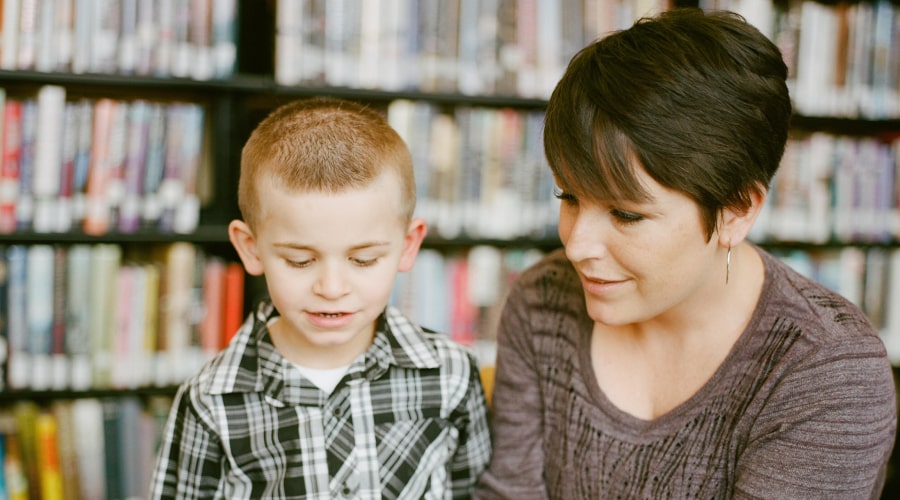settings
children
With Famly since
My current favourite expression is ‘reach for the sky’. If you have heard me speak recently, you will almost certainly have heard it - I use it whilst showing a picture of two children looking out of a window, across a river and up at the clouds.
I’m saying it a lot, partly because I’m worried about the myths going around about the Revised EYFS Statutory Framework. Instead of reaching for the sky, will these myths lead us to a ‘dumbing down’ of how Early Childhood Education is perceived in England?.
Will ‘expectations’ of children between birth and five, become boxed up? Will we go back to putting in place linear models of ‘progress’ that all children move through at set times throughout the year?
Because at its core, these shouldn’t be the real messages of the Revised Statutory Framework for the Early Years Foundation Stage. I’m writing this article in an attempt to dispel the myths and misinformation that appear daily - and answer the question, what has really changed with the new EYFS?

Is the new EYFS really that different?
The most important thing about the Statutory Framework is that it has been ‘revised’, not completely changed.
It is different in some areas, but it remains fundamentally familiar. That means that if you’re already comfortable with your provision and know that it’s the best it can possibly be for the children and families, there is no need for change.
The revised Framework can be a time for you to reflect on your practice, think about paperwork and the burden of over-assessment too. But there is no need to make changes if you don’t feel they’re necessary.
Why do we have a new EYFS?
The Framework was revised after the responses to the Primary Assessment Consultation in 2017 suggested that:
Many respondents felt that evidence-gathering for the EYFSP dominates classroom time, leaving less time for effective teaching and ensuring that children are progressing appropriately.
What followed was:
- New Educational Programmes
- New Early Learning Goals
- Plenty of reminders that there is no need to create unnecessary paperwork and lots of evidence of every child’s progress
The excess of paperwork has been a myth that has grown over the years, making these reminders very timely, as were those that reminded us that the Early Learning Goals are not our curriculum in the Early Years.
However, the problem now is this: what do you do if you have fallen into working with lots of paperwork and focusing heavily on the Early Learning Goals? For all sorts of reasons, many people now have a sense of panic setting in as they rapidly try to work out how to move forward in a way that they may not be used to.

How should I approach the changes?
But the message here is not to panic.
Remember that any change is a process, not an event. So take time to really think about what you do now and what - if any - changes you need to make. Your first stop is to read the Statutory Framework thoroughly and you’ll see how little has changed. If you’ve never read a Statutory Framework, then make this the time to start.
There are two key parts in the Learning and Development section that remain the same. Remember, it’s statutory that your work is underpinned by both of these sections.
Firstly, the Overarching Principles, which are:
- The unique child
- Enabling environments
- Positive adult relationships
- Learning and development
And the Characteristics of Effective Teaching and Learning, which are:
- Playing and exploring
- Active learning
- Creating and thinking critically
It’s worth noting that the Characteristics of Effective Teaching and Learning have always had the word ‘teaching’ in the title. This isn’t new and the word ‘teaching’ is important, because we must use the definitions of the Characteristics to inform our teaching and provision so that they are engaging and challenging for effective learning.
Maintaining the Overarching Principles means that we remember that the Unique Child is at the heart of everything we do. You have to bear this in mind when reading the revised Educational Programmes. Again these descriptions of what must be covered in each area of learning are not new, but there have been changes in what’s in them.
The Educational Programmes are our ‘curriculum’ and you must make sure you know them. From there, how you choose to teach them will be unique to your setting and the needs and interests of your children.
So what has changed in the new EYFS?
The main differences that are in the Learning and Development section are the changes in names and direction of the Early Learning Goals.
These changes do not affect anything to do with teaching and learning, but do make a difference to assessment at the end of the Reception Year. You can read and understand them, but please do remember that the Early Learning Goals are not and should never be your Early Years curriculum.
The only other change worth noting in this section is that Reception Teachers are now required to complete the ‘Reception Baseline Assessment (RBA)’ with all new starters to their classes.
Finally, the main change to the welfare requirements is the addition that you need to promote good oral health in your setting. This has caused anxiety because the myth has spread that this means daily teeth cleaning must be introduced if it isn’t in place already. This is not the expectation, but in my recent webinar with Famly we did cover lots of ways you can embed good oral health in your provision.

So what’s all the fuss?
So why has this resulted in what seems to be a ‘dumbing down’ of how Early Childhood Education is perceived? The problem has arisen partly from the poor timing of the publication of the draft Framework, just before the pandemic when anxiety levels were already sky high.
This anxiety filtered into social media and myths have grown. As Famly recently recently covered in their EYFS Tracking Lie documentary, these myths can become habits of practice that were never actually requirements.
For example using the statements of the 2012 Development Matters as a ticklist to track progress, or needing a certain amount of observations as an evidence base. The reiteration in the 2021 Framework that these are not necessary has left many feeling unsure how to proceed without them.
We need to make sure the gap isn’t filled with ideas for new, unnecessary, paperwork. For example ‘progression maps’ that define learning as linear, mapped out with a plan for each child to hit the same point of learning. These are not informed by child development and miss the principle of the ‘Unique Child’.
Instead, we need to remember that our curriculum is the educational programmes, mixed with our understanding of our children. And it will change all the time with what the children bring to the setting.
Take a step back for a moment, and you know this is the case. It’s just important that we know what we are teaching and why. It is impossible to decide from the outset exactly what will be taught each year, term or even week, but good teachers will always know the learning needs and interests of each child and be developing them daily. So take a deep breath, and trust in the knowledge of the people in your setting.
A way to fight the myths
When things do come up that feel out of place, official guidance is your friend. Make absolutely sure that you know the Statutory Framework 2021, and the most recent Ofsted Inspection Handbooks inside out, and refer to them constantly. Know exactly what they say, and do not say.
And never be afraid to question if you are told something that you aren’t comfortable with – refer back to the source of the statutory documents and discuss your point.
Then, we can focus on what’s important. Through enabling environments and positive relationships every unique child will be able to reach for the sky.
The big ideas
Try learning journals for free
Add observations, and build digital learning journals to share with families instantly. All with your completely free 14-day trial.
Get started









